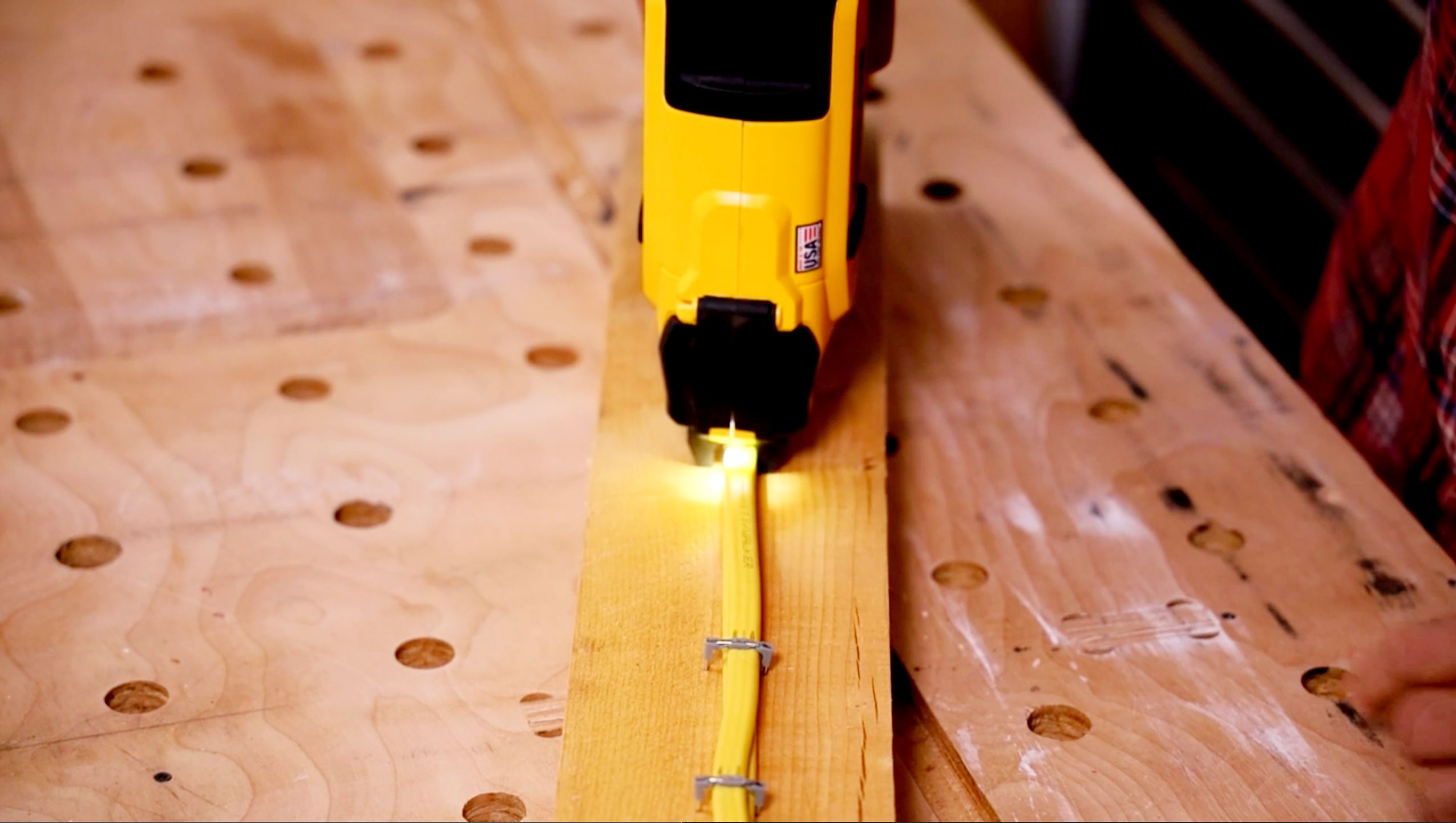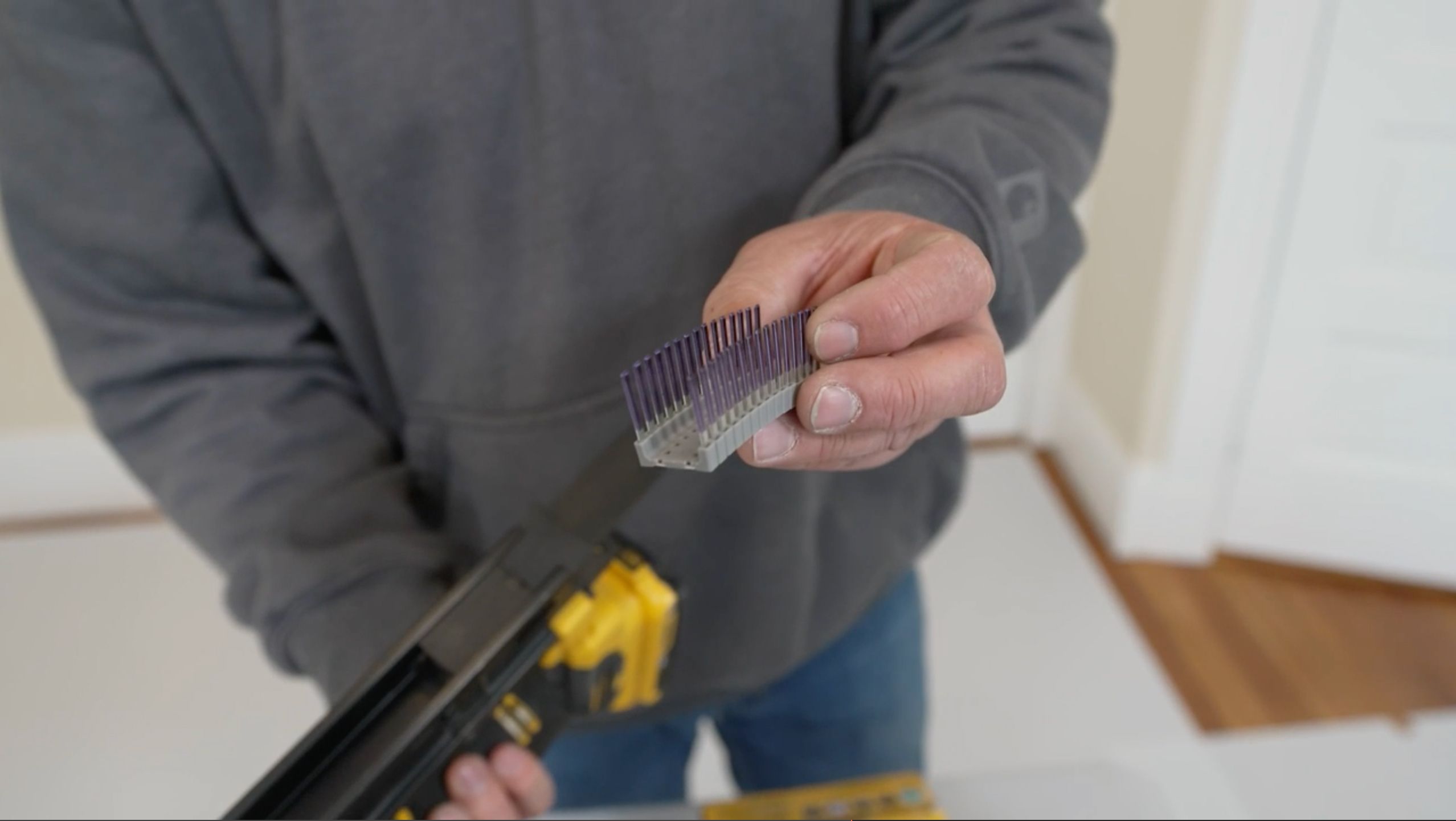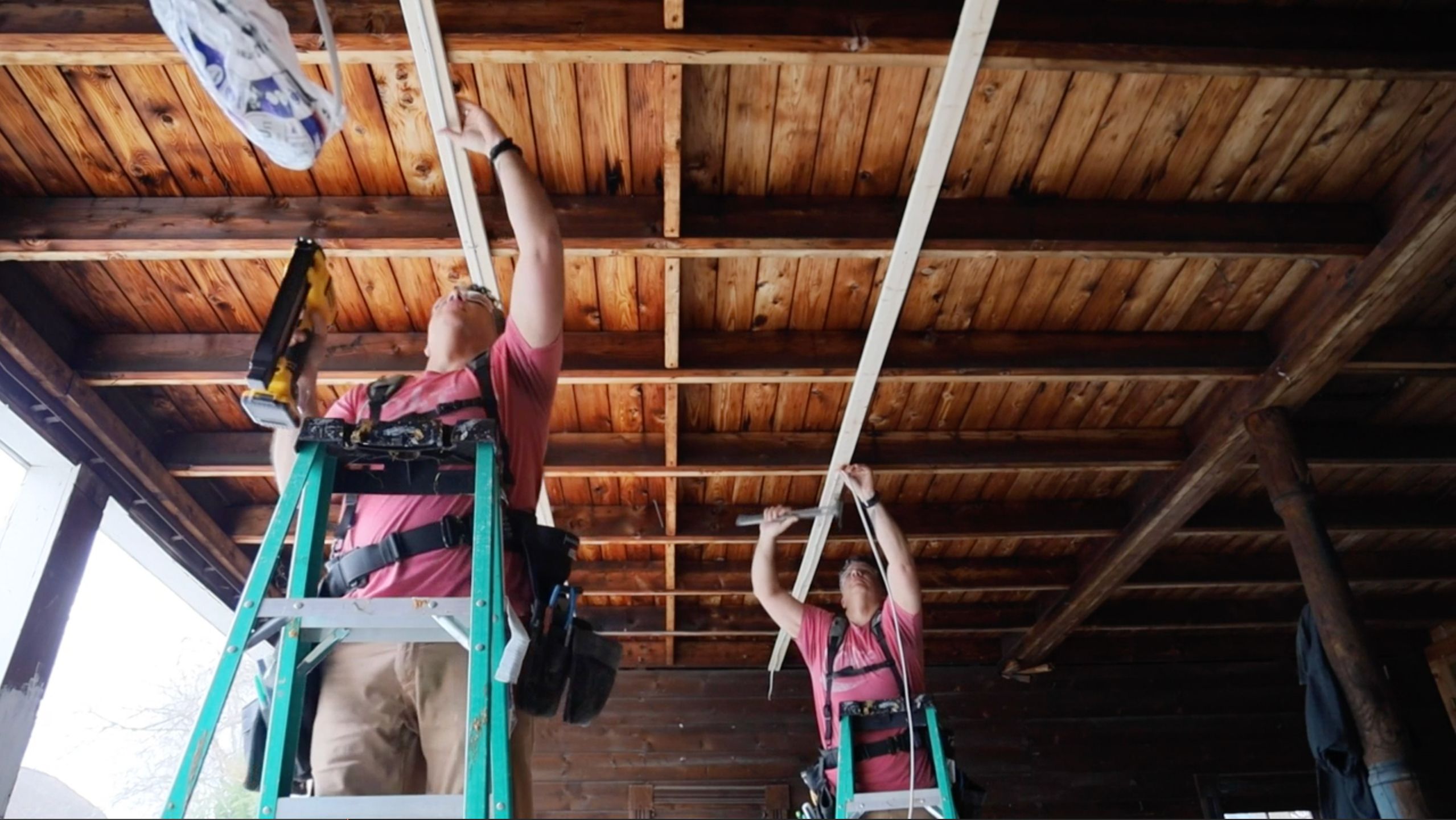The DeWalt Cordless Cable Stapler is a specialized tool designed to revolutionize the way electrical contractors secure wiring. This device streamlines the time-consuming process of hand-stapling electrical cables, which can save you hours on your home improvement projects. In the video above, Tool Lab editor Chris Ermides and This Old House electrician Heath Eastman put this unique tool to the test, exploring its capabilities and limitations in various job site scenarios.
Overview of the DeWalt Cordless Cable Stapler
The DeWalt Cordless Cable Stapler is a compact and powerful tool that runs on DeWalt’s 20V Max battery platform. It’s designed to replace traditional hand stapling methods for securing electrical cables to framing structures, as required by electrical codes.
“It takes the place of hand staples,” says Ermides. “While it’s geared towards professional electricians, it’s such a unique, interesting tool that I wanted to cover it here on Tool Lab.”
This stapler has a brushless motor and lithium-ion battery. Its compact design fits into 16-inch stud bays, and it uses a single-size staple for multiple wire configurations. It also features an LED light for improved visibility.

Pricing and Availability
The DeWalt Cordless Cable Stapler is available at various home improvement stores. You can buy the full kit with a 2 Ah battery, case, and charger for $299 at The Home Depot.
DeWalt Cordless Cable Stapler Performance and Usability
The DeWalt Cordless Cable Stapler offers time-saving benefits compared to traditional hand-stapling methods. In a side-by-side comparison conducted by Ermides, the cordless stapler proved to be much faster than hand-nailing staples, even when accounting for initial hand staples to secure wire placement. It also allows the user to stack and staple multiple cables simultaneously.
When working with plaster or lath, especially in older homes, it produces less dust and debris compared to traditional hand-stapling. Eastman notes that because he could “hold the staple in place, hold the wire in place with the gun, [and] pull the trigger, I wasn’t getting any mess on me.” The tool also has an excellent battery and runtime. “It’s been a couple of months that I’ve been using that same charge,” says Eastman.
However, it may not provide the same level of precision as hand-stapling for perfectly straight wire runs. It can also be challenging to use on dense, older framing lumber. Staples may not always set properly, requiring occasional adjustments. While the tool is more efficient than hand-stapling, it’s also more expensive.

The DeWalt Cordless Cable Stapler is best used in new construction with open framing, large-scale wiring projects, and jobs requiring rapid cable installation. It may not be suitable for smaller projects or dense framing lumber.
Tips for Using the DeWalt Cordless Cable Stapler
To maximize the benefits of this tool, consider the following tips:
- Use hand staples at the ends of wire runs to ensure straight placement.
- Practice on scrap lumber to get a feel for the tool’s operation.
- Maintain a firm grip on the stapler when working with dense lumber.
- Keep spare batteries charged for uninterrupted work on large projects.
- Combine the stapler with traditional methods for optimal results in challenging situations.
Enhancing Productivity With the DeWalt Cordless Cable Stapler
To maximize productivity on your job sites, follow these recommendations:
- Pre-plan cable routes: Map out your cable runs in advance to minimize adjustments and corrections during installation.
- Combine methods for precision: Use hand staples for the start and end points, then switch to the cordless stapler for quicker mid-run applications.
- Train your team: Ensure all team members are familiar with the tool’s operation to reduce errors and improve efficiency.
- Maintain equipment: Regularly check the stapler for wear and tear to prevent downtime and maintain optimal performance.

The Bottom Line
The DeWalt Cordless Cable Stapler is a specialized tool that offers time-saving potential for professional electricians—particularly on large-scale projects. While it may require some technique adjustments and comes with a higher initial cost, the efficiency gains make it a worthwhile investment for many electrical contractors. However, traditional hand-stapling methods may be the most practical choice for homeowners working on small-scale projects.
Specs
Tool Height: 12 in
Tool Length: 7.75 in
Tool Width: 3 in
Tool Weight: 4.7 lbs
